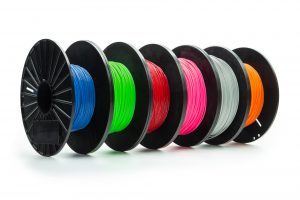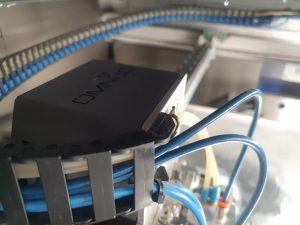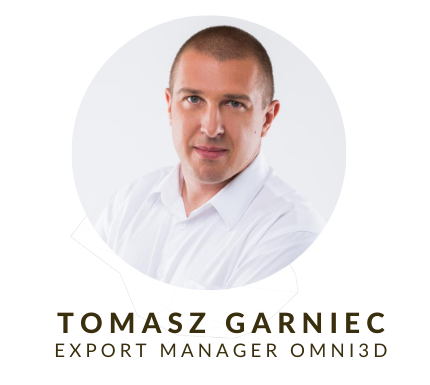What 2022 will bring to FDM / FFF 3D printing. New trends!
It was another strange year, marked by a pandemic, lockdowns, a trade fairs that ware supposed to happen, but not. The year had its distinct phases which were reflected in the results of many companies. The initial subsidies from government programs offering the chance to implement 3D printing in the middle of the year has been halted. Many companies stopped receiving inquiries and orders overnight. At Omni3D we also felt it, and despite the fact that 2021 was another record year…. there is a certain hunger ... because we could do more. People who visited Us during the fairs (Formnext, 3DPrint, TCT Chicago , TCT Birmingham) and other events that we ware a part of - showed that in the environment of industrial applications of 3D printing there is a growing awareness of its actual possibilities. reflected in the trends that will develop in 2022 and in the following years.
Filament certification and alternatives for PEEK and Ultem.
The PEEK and Ultem market is fantastic, huge and, at the same time, growing to the most stable degree. Each major manufacturer presents high-temperature printers. During many meetings, we were surprised that through this year the awareness of customers (railway, aviation, automotive) – who still in 2020 defined their needs as focused only on Peek and Ultem – are now looking for alternatives that will be more tailored to their needs. The awareness of the cost, machine prices and high technological requirements that must be met in order to be able to print with these materials is growing, and they know that there are alternatives on the market. A trend is visible in large industrial groups which, in cooperation with filament producers, certify selected filaments according to their specific needs. This is a fantastic opportunity for a much faster development of 3D printing. This was very strongly reflected in Omni3D, where in 2021 the portfolio of our clients expanded to include companies from the Aerospace, Heavy Industry, Railway Industry and many other sectors … which were previously focused only on PEEK and Ultem. Filament certification will be what will drive 3D printing in the coming years and will allow for its wider use and application.
FLEXIBLE materials for 3D Printing
In 2019, 2020 and 2021, the trend of printing from flex materials like TPU, was noticeable. During this period, many manufacturers adapted their devices to print from these materials. What happened at the end of 2021 was a surprise for us. Every second incoming query to Omni3D, each conversation touched on the subject of „rubber” printing. The questions were not whether – but how to do it. The Electric Sector, Aerospace as well as the automotive sector chose those devices that gave correct or good TPU prints. We have succeeded many times. This trend was also visible in conversations at fairs and conferences, where the attention of visitors was attracted by large prints made of Flex filaments. The interest and the content of the talks show how much the knowledge of 3D printing is changing, and how users experiment with devices and materials with the increase in technological knowledge. This trend also shows how important it is to look at a wide range of filaments and what challenges await manufacturers to use the largest possible range of printing materials on one device.

3D printing is part of the process
For many people, a process is a set of actions that are taken to achieve a specific result … this is also the case in the modern approach to 3D printing. In 2021, it was noticeable that users are starting to think of a 3D printer as part of certain activities. So far, this trend has not been so visible. It’s a bit of a willingness to experiment, more technological knowledge, and more courage… to do something new, some technological breakthroughs. If we will come back to 2019, the mixture of filament with stainless steel filings was rather considered a whim of a great filament producer and as a demonstration of its power. Customers who were interested in PEEK printing also touched it and the process trend slowly began to emerge on the wave of increased use of this filament. Because in the case of PEEK printing, we always talk about a process in which the print itself is only a small/big part. But what does the 3D printing process mean? It is a specific set of actions – in this case – preparation of the filament (drying), printing, drying the print, burning it in a furnace (sintering) – which ultimately made to give us a „steel” or „ceramic” or „other” element. This is another chance for 3D printing to appear on a larger scale, and the market pressure and the above-mentioned courage, which gives new thoughts, new ideas and new applications, will push filament producers to newer and crazier ideas. I am waiting impatiently for this, because it is a chance to show the real power of the industrial application of 3D Printing.
Shortening the supply chain and greater production security, but also education in 3D printing … a long-term trend.
The pandemic bounce back significantly on many companies that lost their production capacity overnight. Some of the problems were due to lockdowns, but most were due to delivery delays. Even at the beginning of 2021, many companies were waiting for what would happen. Subsidies for governments , tax breaks and other reliefs gave a sense of security. Throughout 2021, and with the advent of new Covid 19 varieties, companies have changed their thinking and this trend will continue in the years to come. It is no coincidence that in the coming years the Asian market will strongly develop in 3D printing (Wohlers report). Many companies from the United States and Europe have decided to move some of their production, R&D departments, or entire companies to these areas. The purpose of this is to significantly shorten supply chains and to be able to react faster to threats emerging in the world. At that time, many companies also started the process of implementing 3D printing. This trend will continue to develop and despite the many obstacles it faces and its relatively slow pace, it will grow faster and faster. You may ask, why doesn’t it develop faster? There are several reasons for this, but the most important is the lack of specialists who can work effectively with 3D printing. The world is finally slowly realizing that 3D printing is something that will determine the strength of the economy in the coming years, which is why programs aimed at the implementation of 3D printing in companies (as in France) are being created, but also programs for education are being created, which are to show printers at an early stage of education level. Looking also at where Omni3D printers landed in 2021, we can clearly say that building new laboratories at large universities around the world, equipped with the latest 3D printing solutions, is not a coincidence and such education will bring a huge increase in the importance of 3D Printers in the long run and in everyday life of everyone.

Want to know more about 3D printing?
Contact us and discover the possibilities of 3D printers

Kontakt:
LinkedIn: Tomasz Garniec
m. +48 886 618 588
e-mail: tg@omni3d.com

